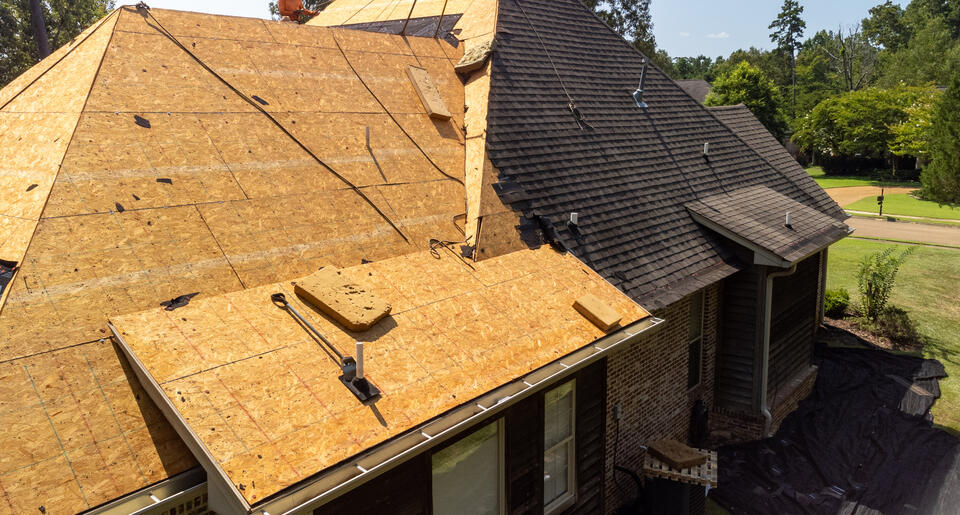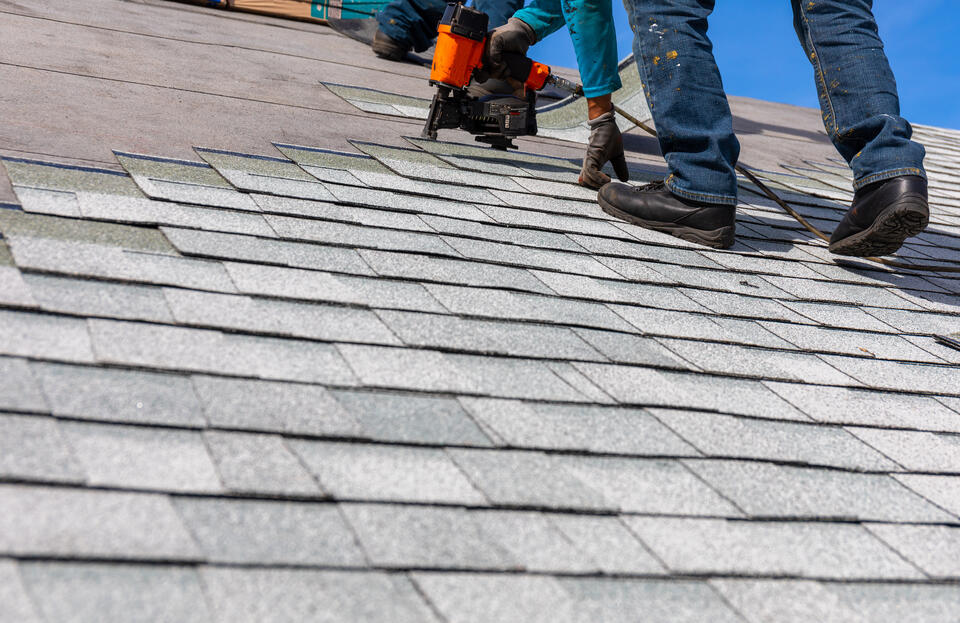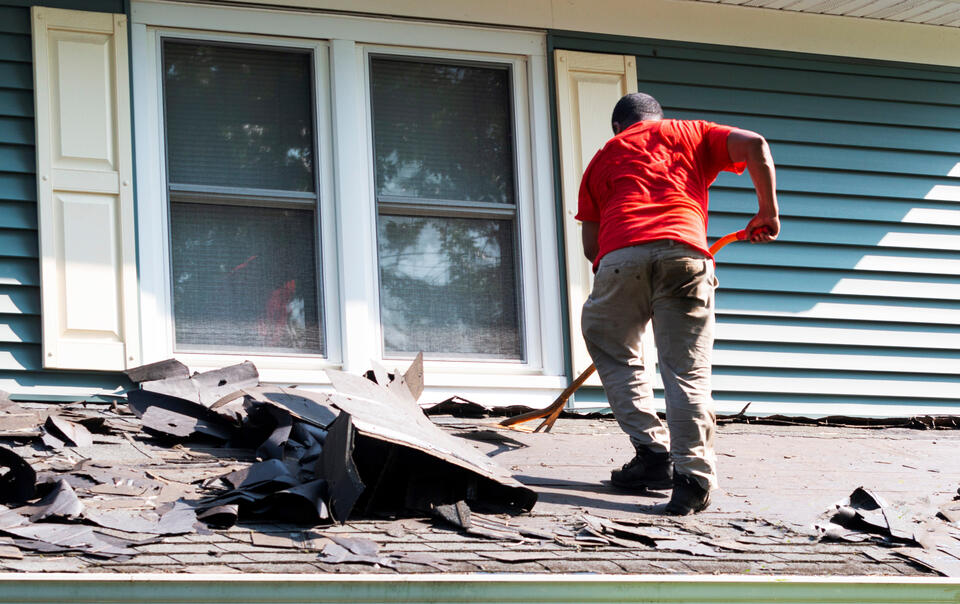How Long Does It Take To Replace A Roof? (On Average)
When it comes to maintaining a safe and beautiful home, replacing your roof is one of the most important investments you can make. But how much time should you plan for this crucial task? Understanding just how long does it take to replace a roof can help you prepare for the process and minimize disruptions to your daily life. This blog post outlines everything you need to know about roof replacement timelines, including:
- Understanding roof replacement
- Key factors that could speed up or slow down the process
- Tips for a smooth roof replacement project
🤔 Understanding Roof Replacement

Homeowners frequently face several concerns regarding the duration of their roof replacement project. A primary issue is the potential disruption to daily routines; it is vital for homeowners to ensure that their family’s schedule experiences minimal disturbance. Additionally, there is often anxiety about home security during the project, particularly if the replacement takes longer than anticipated, leaving the house vulnerable to weather conditions. Weather itself poses a significant problem; unexpected rain or extreme temperatures can cause delays, increasing stress due to prolonged exposure. Furthermore, the availability of materials and the efficiency of the hired contractors are crucial factors, as any setbacks in these areas can extend the timeline. Finally, there is the worry about unforeseen costs that may arise if the project exceeds the planned schedule, adding financial strain to the overall stress of the replacement process.
Signs You Need a Roof Replacement
Recognizing when it’s time to replace your roof can prevent more severe damage and costly repairs. Here are some signs that indicate you might need a roof replacement:
- Age of the Roof: If your roof is more than 20 years old, it’s likely nearing the end of its lifespan, especially if it’s made from asphalt shingles.
- Missing or Damaged Shingles: Look for missing, cracked, or curling shingles, as these are indicators of wear and tear.
- Leaks and Water Damage: Water stains on the ceiling or walls can signal that your roof is no longer effectively preventing moisture from entering your home.
- Sagging Roof Deck: If you notice areas of your roof that appear to be sagging, this could indicate structural issues needing urgent attention.
- Increased Energy Bills: A spike in heating or cooling costs might suggest that your roof’s ventilation system is compromised.
- Presence of Mold or Moss: Mold, moss, or fungi growth on your roof surface may indicate trapped moisture, which can lead to further damage.
- Granule Loss: If you find lots of granules in your gutters, your shingles may be deteriorating faster than they should.
⏳ 7 Key Factors for a Roof Replacement Timeline

There are several factors that can influence how long your roof replacement will take. Here’s a list:
1. Size of the Roof
A larger roof surface naturally requires more material and labor, increasing the timeframe. It involves more square footage needing coverage, which means additional time for installing each section and ensuring everything is securely fastened. Larger roofs may also require more workers or specialized equipment, impacting the speed of completion.
2. Type of Roofing Material
Some materials, such as asphalt shingles, are quicker to install compared to tiles or slate. Asphalt shingles are lightweight, easy to cut, and simple to fit, making them a speedy option. On the other hand, tiles or slate are heavier and often require more precision and care during installation, extending the timeline. Some materials might also require special tools or techniques, adding to the complexity.
Asphalt Shingle Roofs: The most popular roofing material in the U.S., asphalt shingles can be replaced relatively quickly—within 1-2 days for small to mid-sized homes. Larger properties or homes with steep pitches might take an extra day.
Metal Roofs: While durable and energy-efficient, metal roofing requires specialized installation techniques, pushing the timeline to about 2-3 days.
Tile or Slate Roofs: Known for their luxurious aesthetic, tiles and slate roofs require great care during installation. This process can take as long as 5-7 days, or more, depending on your property size and roof accessibility.
Flat Roofs: Ideal for modern homes or commercial properties, flat roofs often use materials like EPDM or TPO. These take around 2-3 days to install due to fewer joints and seams.
3. Roof Design Complexity
A simple roof design will be quicker to replace than one with complex geometry, multiple peaks, or steep angles. Complex designs necessitate more customized cutting and fitting of materials, which can slow down the process. Intricate designs also demand more detailed planning and may require unique materials, impacting both preparation and installation times.
4. Condition of the Old Roof
If your old roof has multiple layers or is severely damaged, removing it may take longer. Roofs with extensive deterioration might require more careful removal to avoid damaging the underlying structures. Multiple layers add time to the demolition phase as each layer has to be carefully stripped away. Hidden damages can also lead to unforeseen repairs, delaying progress.
5. Weather & Season
Rain, snow, or excessive heat can halt work and extend timelines. Weather conditions affect not only the safety of the workforce but also the effectiveness of certain materials during installation. Excessive heat can make materials unwieldy, while rain or snow can halt work completely, necessitating rescheduling and extending project timelines. Seasonal factors also play a role in the availability of certain materials and labor.
6. Contractor’s Schedule
The availability of your chosen contractor can also affect when the project begins and how quickly it’s completed. High demand periods might mean waiting longer for your project to start, as contractors may be managing multiple jobs. A contractor’s workload can affect their ability to dedicate sufficient resources to your project, influencing the speed of completion.
7. Permits and Inspections
Depending on where you live, obtaining required permits or passing inspections might cause delays. Local regulations often require specific permits for construction projects, and obtaining these can be a time-consuming process involving paperwork and approvals. Inspections are necessary to ensure compliance with safety and building codes, and any issues found during inspections can lead to further delays as they must be addressed before continuing.
💡 Tips for a Smooth Roof Replacement Project

To help ensure your roof replacement process goes as quickly and smoothly as possible, follow these tips:
Choose the Right Contractor
Selecting the right contractor is critical. Look for a reputable roofing company with a proven track record in your area. Check online reviews, ask for references, and verify their licenses and insurance. A good contractor will provide a detailed estimate and be transparent about costs, timelines, and potential challenges.
Plan Around Your Schedule
Timing is important when replacing your roof. Schedule the replacement during a period when weather conditions are favorable, such as after the rainy season, to minimize delays. Also, consider when your home is less active, perhaps when family members are less likely to be home, to reduce disruptions.
Communicate Clearly
Effective communication with your contractor is vital. Discuss potential timelines, materials, and expectations upfront. Make sure you understand each phase of the project and the contractor is aware of your priorities. Keep an open line of communication throughout the project to address any issues promptly.
Clear the Area
Prepare your home for the roof replacement by removing obstacles from around your house, such as vehicles, patio furniture, and lawn decorations. This will give workers easy access to your roof and help prevent accidents or damage to your belongings. Inside, secure items on the walls to avoid them shifting due to vibrations.
Prepare for Disruptions
Recognize that certain phases of the project might require you to adjust your daily routine. There will likely be noise from tools and workers, so plan accordingly if you need a quieter environment. You might also have limited access to parts of your home or yard, so consider alternative arrangements for parking and entry.
🙌 Trust Shamrock Roofing for Your Home Improvement Needs
Understanding the timeline for roof replacement helps ensure a smooth process with minimal disruptions. At Shamrock Roofing and Construction, our team is dedicated to providing exceptional service and expertise, making us the team you can trust for all your home improvement needs. We pride ourselves on our commitment to quality, efficiency, and customer satisfaction. Our experienced professionals use only the highest-quality materials and employ precise installation techniques to meet your unique roofing requirements. Don’t leave your home improvement projects to chance—partner with Shamrock Roofing and Construction today. Contact us now for a free consultation and see how we can assist you in achieving the home of your dreams!
